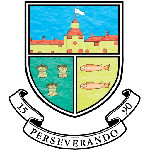Drama
| Mrs H Weegram (Head of Department) | hweegram@conyers.org.uk |
| Mr E Smith | esmith@conyers.org.uk |
| Miss M Smith | msmith@conyers.org.uk |
Key Stage 4 Curriculum Map
Curriculum Intent
GCSE Drama offers students the opportunity to explore drama as a practical art form in which ideas and meaning are communicated to an audience through choices of form, style and convention. Students are encouraged to create, perform and respond to drama informed by their theoretical knowledge of drama and theatre. This will build resilience, confidence and an enjoyment of the collaborative process. Through the devising of drama students can explore all aspects of this medium. Students can choose to develop as a performer or a designer (lighting, sound, set, costume, puppets). They may also explore both aspects of performance and design over the course. All students explore texts practically and work on two text-based performances. Students learn to collaborate with others, think analytically and evaluate effectively. They gain the confidence to pursue their own ideas, reflect and refine their efforts. Whatever the future holds, students of GCSE Drama emerge with a toolkit of transferable skills, applicable both in further studies and in the workplace.
The course is studied over two years and is broken into three distinct components.
Component 1: Understanding drama
Component 2: Devising drama
Component 3: Texts in Practice
Key Knowledge and Skills
Characteristics of performance texts and dramatic works
- genre
- structure
- character
- form
- style
- language
- sub-text
- character
- motivation and interaction
- the creation of mood and atmosphere
- the development of pace and rhythm dramatic climax
- stage directions
- the practical demands of the text
Social, cultural and historical contexts
- the social, cultural and historical context in which the performance texts studied are set
- the theatrical conventions of the period in which the performance texts studied were created.
How meaning is interpreted and communicated
- performance conventions
- use of performance space and spatial relationships on stage
- actor and audience configuration
- relationships between performers and audience
- design fundamentals such as scale, shape, colour, texture
- the design of props and the design of sets such as revolves, trucks, projection, multimedia, pyrotechnics, smoke machines, flying
- the design of costume, including hair and make-up
- the design of lighting such as direction, colour, intensity, special effects
- the design of sound such as direction, amplification, music, sound effects both live and recorded
- performers’ vocal interpretation of character such accent, volume, pitch, timing, pace, intonation, phrasing, emotional range, delivery of lines
- performers’ physical interpretation of character such as build, age, height, facial features, movement, posture, gesture, facial expression stage directions
Drama and theatre terminology and how to use it appropriately
- stage positioning (upstage, downstage, centre stage)
- stage configuration
- theatre in the round
- proscenium arch
- thrust stage
- traverse
- end on staging
- promenade
The roles and responsibilities of theatre makers in contemporary professional practice.
- playwright
- performer
- understudy
- lighting designer
- sound designer
- set designer
- costume designer
- puppet designer
- technician
- director
- stage manager
- theatre manager
Year 10
Half Term 1
Component 1:
Noughts and Crosses
Read set play for Section B
Introduction to Drama
Performance design explorations
Half Term 2
Component 1:
Noughts and Crosses
Read set play for Section B
Design workshop
Component 2:
Devising skills
Half Term 3
Component 1:
Noughts and Crosses
Read set play for Section B
Design workshop
Component 2:
Devising skills
Half Term 4
Component 2:
Development Mock devised performance
Component 1:
Live theatre performance
Half Term 5
Component 3:
Introduction to performing scripts for component
Half Term 6
Component 3:
Performance workshops
Year 11
Revision for component 1: sections A,B,C through the year
Half Term 1
Component 2:
Devising from stimulus (3 Pieces), development and rehearsals.
Supporting Students/Aspects of Performance
Research and devising logs
Half Term 2
Component 2:
Work-in progress for performance.
Preparation of Devising Log sharing
Half Term 3
Component 3:
Initial ideas for performance
rehearsals and work-in-progress performance
Supporting Technical Students/Aspects of Performance
Half Term 4
Component 3:
Polishing Performances
Half Term 5
Component 1:
Revision

